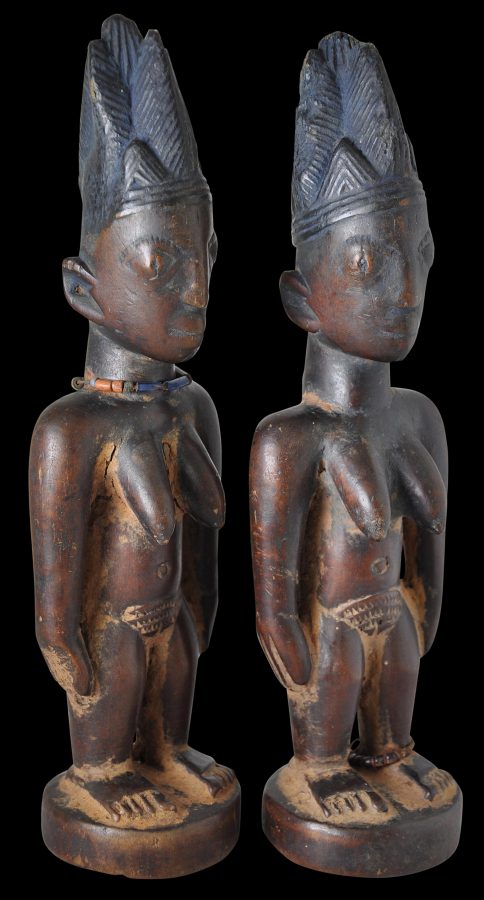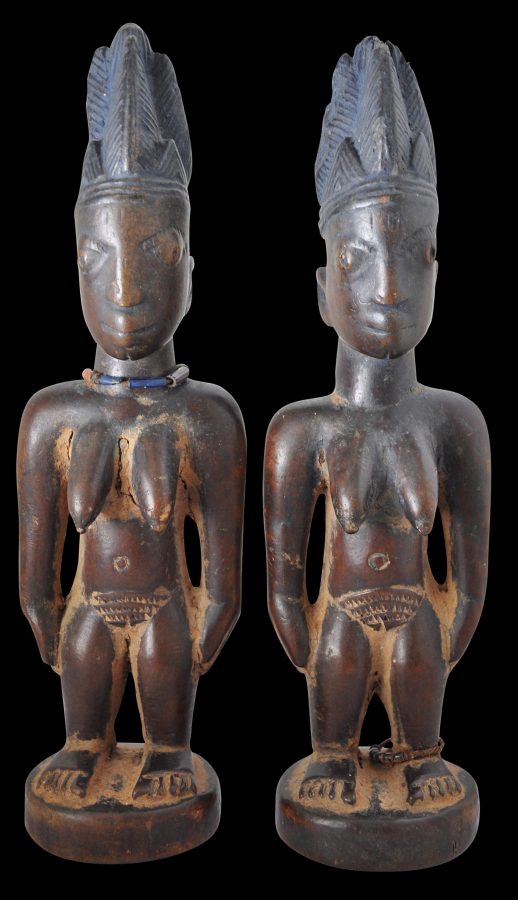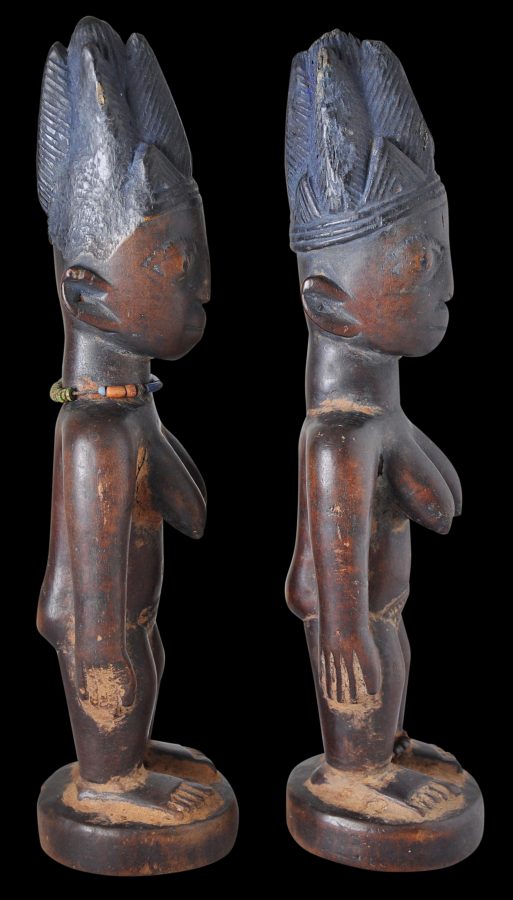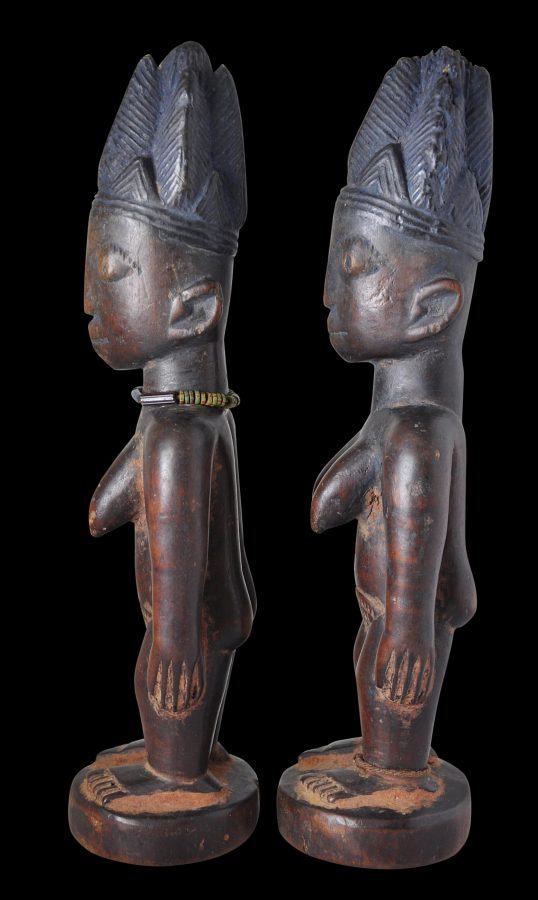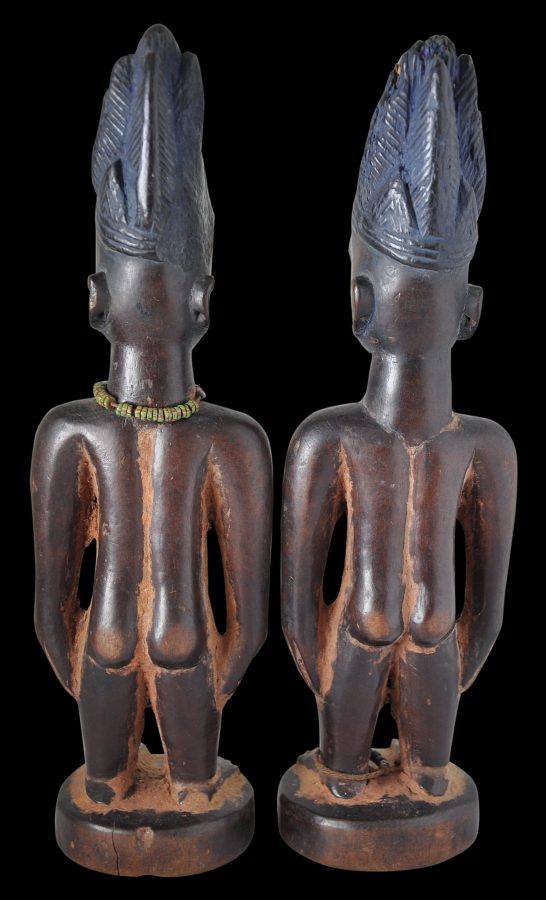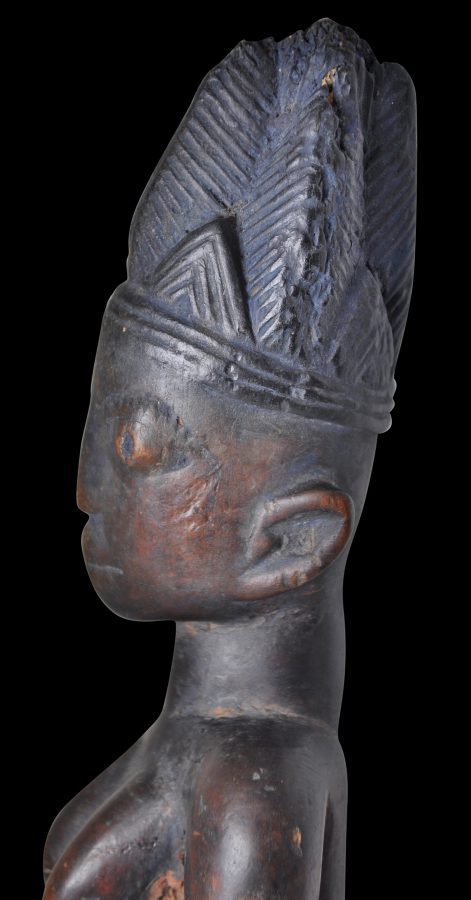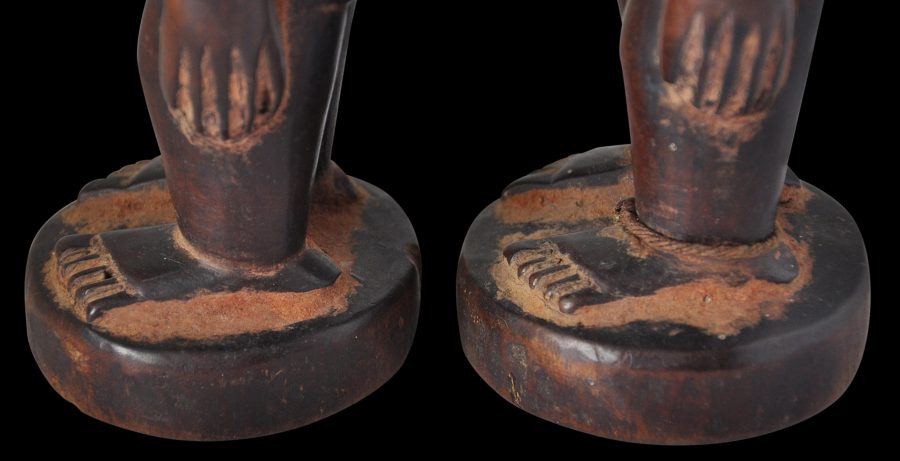This well-carved pair of female Ere Ibeji figures has a superb patina from age and ritual use. Some of the details of the faces have been smoothed by ritual caressing and stroking. The figures stand with hands on hips. They have wide-open, bulging elliptical eyes; hollow, watchful irises; prominent noses and ears; and protruding lip regions. Ere Ibeji figures represent a dead infant twin. However, like all such ibeji figures, this pair is carved with mature or adult features, such as prominent breasts and prominent pubic areas.
The multiple point coiffures rise vertically from the heads. These high, towering crown-like coiffures tend to be found on female twin figures from the north-western Oyo district. This coiffure is usually reserved for queens. Part of the coiffure of one has worn away.
The pair is in fine condition with rounded contours from handling and use. One is adorned with a trade, glass-bead necklace; the other has a beaded anklet. They retain remnants of tukula powder in their crevices, which was applied to protect the image from insect damage and also out of a belief that it had healing or magical properties. Overall, this pair are very fine examples.
Yoruba people have the highest dizygotic (non-identical) twinning rate in the world. The birth of twins amongst Yoruba women are four times more likely than anywhere else. Unfortunately, the mortality rate of the twins also was high. Ere Ibeji figures were carved as spiritual representations of the twins who died. These figures were commissioned from village carvers, who were also often highly trained priests (Babalawo). The images were carved as adults, rather than as the deceased infants. It is common in African sculpture that representations of children are made with adult-like qualities, including elaborate coiffures, scarifications on the face, fully developed breasts (on female figures), pubic hair and prominent genitalia. They were usually placed on a shrine dedicated to Elegba (a divine messenger deity) in the living area of the house and fed, bathed and dressed regularly. These figures were particularly special to the mother, who kept them close to her and caressed the figures in a loving manner, hence the wear that genuinely old examples exhibit.
References
Bacquart, J. B., The Tribal Arts of Africa, Thames & Hudson, 1998.
Fagg, W. and J. Pemberton, J., Yoruba: Sculpture of West Africa, Collins, 1982.
Rowland, A., H.J. Drewal, and J. Pemberton, Yoruba: Art and Aesthetics,Museum Rietberg, Zurich, 1991.


